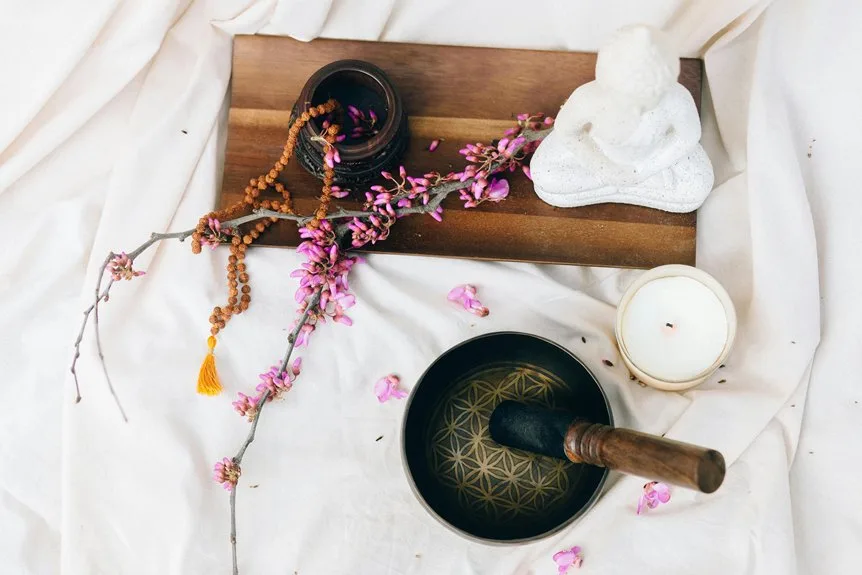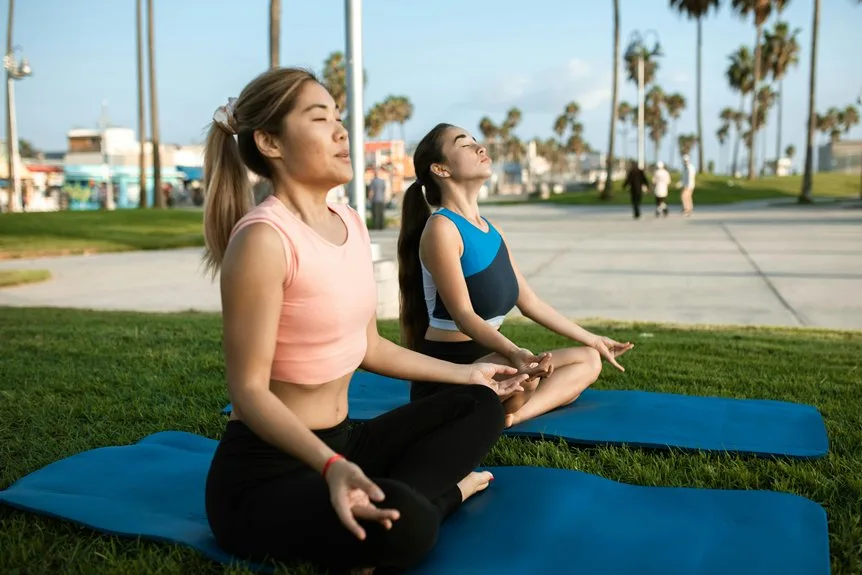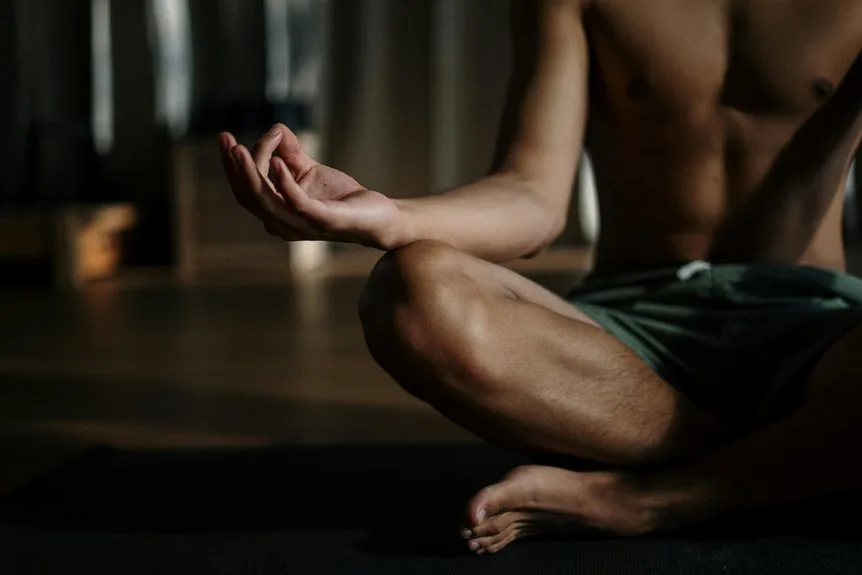Many people rush through their days barely noticing the little moments that make life unique, but mindfulness encourages a different approach. By paying attention to what’s happening right now—whether it’s sipping coffee, walking the dog, or chatting with a friend—anyone can find unexpected calm and clarity. It’s not about sitting cross-legged in silence for hours; it’s about making each moment count. But what exactly does mindfulness change, and why should anyone bother?
Understanding the Core of Mindfulness
Why do so many people talk about mindfulness these days? Mindfulness is all about bringing attention and awareness to the present moment, in a non-judgmental way. It’s not just a trend—it has roots in ancient meditation and spiritual practices, now woven into modern routines.
By focusing on breathing or tuning into sensations, individuals practice being truly here, not lost in worries or distractions. This approach helps people feel more connected, both to themselves and others. Mindfulness invites everyone to slow down, offering a sense of belonging through shared, attentive living. It’s like a group pause button for the busy mind.
Practicing mindfulness can be enhanced by visiting destinations like Wilbur Hot Springs, where the tranquil environment and natural hot springs promote a deep sense of relaxation and self-connection.
Key Benefits of Daily Mindfulness Practice
Everyday mindfulness brings a handful of noticeable perks, both for the mind and body. By making mindfulness a daily practice, people often notice a real drop in stress levels, like a mental sigh of relief. It’s also linked to better mental health, with less anxiety and clearer, more focused attention.
Even short bursts—just ten minutes—can improve memory and sharpen cognitive clarity over time. Physically, mindfulness can help lower blood pressure, supporting overall health. Most importantly, sticking with mindfulness builds emotional resilience, making it easier to handle life’s ups and downs as part of a supportive, connected community. A destination like Solage in Napa Valley offers a serene environment that aligns perfectly with practicing mindfulness, providing visitors with relaxation and a deeper sense of well-being.
How Mindfulness Enhances Emotional Well-Being
Mindfulness works by enhancing awareness of emotions, helping people notice feelings as they arise without instantly reacting. This skill of emotional regulation means fewer impulsive decisions and more thoughtful responses, even during tough moments. Over time, mindfulness encourages a non-judgmental attitude toward emotions, which builds resilience and a sense of belonging, especially when life feels overwhelming. Research shows that regular mindfulness practice leads to fewer symptoms of anxiety and depression, while positive emotions and satisfaction grow. A visit to places like Two Bunch Palms can provide an ideal environment to practice mindfulness and focus on well-being.
The Role of Mindfulness in Stress Reduction
Mindfulness offers a practical way to calm an anxious mind, almost like hitting a mental pause button when stress starts to take over. By helping people build emotional resilience, it makes it easier to handle life’s curveballs without feeling overwhelmed. With regular practice, mindfulness can break the stress cycle, turning frantic moments into opportunities for steady, thoughtful responses. Incorporating mindfulness can be as simple as visiting a farm-to-table restaurant where the surroundings and food encourage a moment of reflection and appreciation.
Calming the Anxious Mind
On those days when worries seem to pile up like laundry, the mind can feel like it’s running a marathon with no finish line in sight. Mindfulness offers a way to press pause, inviting a sense of calm even when life feels anxious and overwhelming.
Science supports this—regular mindfulness practice helps in reducing stress by lowering cortisol, slowing racing thoughts, and soothing the mind’s anxious chatter.
For those seeking connection and peace, mindfulness isn’t just a solo act; it’s a shared path to well-being.
- Lowers stress hormones
- Decreases anxious brain activity
- Breaks cycles of rumination
Enhancing Emotional Resilience
Ever notice how some people seem to bounce back from stress like rubber bands, while others get stuck in the muck of their emotions? The secret often lies in emotional resilience, which mindfulness practice helps build.
Research shows that mindfulness lowers stress hormones, like cortisol, leading to real stress reduction. It also strengthens areas in the brain linked to emotional regulation, making it easier to handle life’s ups and downs.
Breaking the Stress Cycle
There’s a familiar pattern many people experience: stress creeps in, lingers, and before anyone knows it, everyday worries start to feel overwhelming. Mindfulness exercises offer a practical way to break this stress cycle. By weaving these practices into a daily routine, individuals can promote relaxation and improve emotional regulation.
Science backs this up—mindfulness can lower cortisol by up to 30% and enhance heart rate variability, both signs the body is truly unwinding. Here’s how mindfulness can help:
- Interrupts the automatic stress response.
- Encourages steady relaxation throughout the day.
- Strengthens emotional regulation for lasting resilience.
Improving Focus and Memory Through Mindfulness
Although daily routines can be packed with distractions, mindfulness offers a practical way to sharpen both focus and memory. By practicing mindfulness, people train their attention to stay in the moment, cutting through the noise of stress and worry. This steady attention enhances concentration, making everyday tasks smoother and more enjoyable.
Studies show that regular mindfulness can actually rewire the brain, supporting stronger memory and better recall. Even short daily sessions help reduce mind-wandering and increase cognitive flexibility.
Over time, these small habits build up, creating a sense of shared accomplishment and stronger mental clarity for everyone who joins in.
Mindfulness Techniques for Everyday Life
Everyday life offers plenty of chances to practice mindfulness, whether it’s by taking a few slow, steady breaths before checking your phone or paying close attention to the feeling of water on your hands while washing dishes. Sensory awareness—like noticing the crunch of leaves underfoot or the smell of morning coffee—can turn ordinary moments into mini mindfulness exercises.
These simple techniques fit easily into a busy schedule and help bring calm and clarity without needing a meditation cushion or quiet room.
Everyday Mindful Breathing
Mindful breathing doesn’t require a yoga mat or a silent room—it can fit right into the busiest parts of daily life. By choosing to focus on breath, individuals can anchor themselves in the present moment, even while stuck in traffic or waiting in line.
This simple daily practice helps reduce stress and supports emotional regulation, making life’s small moments feel more connected and calm. Scientific studies even show that mindful breathing can lower cortisol levels, enhancing overall well-being.
Try these easy steps:
- Notice the air flow or belly movement.
- Take slow, deep breaths.
- Practice during everyday routines.
Sensory Awareness Practices
While focusing on the breath offers a steady anchor, tuning in to the senses brings mindfulness to a whole new level. Sensory awareness practices invite people to notice sights, sounds, smells, tastes, and touches with deliberate observation.
This type of mindfulness practice encourages present-moment engagement, helping individuals ground themselves in what’s happening right now. Research backs up these benefits, showing that sensory awareness supports emotional regulation and stress reduction.
Whether it’s savoring the scent of morning coffee or feeling the breeze on a walk, these everyday moments become opportunities for connection, improved mood, and a real sense of belonging.
Mindful Routine Activities
There’s something almost magical about turning routine moments into mindful experiences. Mindful routine activities, like savoring breakfast or noticing the feeling of warm water during a shower, invite present-moment awareness into daily tasks.
By paying full attention to sensory experiences, individuals can gently anchor themselves, nurturing emotional regulation and reducing stress. These simple shifts help convert ordinary habits into shared opportunities for growth and connection.
- Eat with intention: Focus on flavors, textures, and aromas.
- Walk mindfully: Notice each step, the breeze, and sounds around.
- Shower with awareness: Feel the water, notice temperature, and let thoughts flow.
Simple Meditation Practices to Get Started
Ever wondered how to actually begin a meditation habit without feeling overwhelmed? For those new to mindfulness meditation, starting small can make all the difference. Just sit comfortably—maybe on a chair or cross-legged on the floor—and focus on your breathing. Notice sensations in your body, like the coolness of air entering your nose or your belly gently rising.
If your mind wanders, simply redirect your attention and bring your attention back, no big deal. Making time to practice mindfulness daily, even for just a few minutes before bed or after waking, helps everyone feel more connected, grounded, and present.
Open Awareness: Paying Attention to the Present
Open awareness is like turning up the brightness on everyday life, inviting a person to notice not just one thing, but everything happening in the present moment. By intentionally shifting attention to all sensations, thoughts, and even distractions, anyone can experience life more fully.
This practice helps people accept what arises, whether it’s a fleeting thought or a random sound, without judging it. With open awareness, everyday tasks become opportunities to connect with the present and with others around them.
Here are three ways open awareness can make a difference:
- Greater stress reduction
- Enhanced emotional regulation
- Improved mental clarity
Body Awareness as a Mindfulness Tool
How can tuning into the body convert a regular day into something more mindful? Body awareness brings attention to physical sensations—like the rise and fall of breath, a racing heartbeat, or tight shoulders—making each moment feel more real.
Mindfulness exercises, such as a body scan, guide individuals to notice these sensations without judgment, encouraging self-acceptance. This practice helps with emotional regulation, easing tension before stress gets overwhelming.
Studies show that increased body awareness supports stress reduction, lowers anxiety and depression, and strengthens resilience. Simply put, getting curious about what the body feels can make everyday life more connected and supportive.
Incorporating Mindfulness Into Routine Activities
Why does a simple task like washing dishes or walking to the mailbox sometimes feel like just another chore, while at other times it brings a surprising sense of calm?
Mindfulness turns daily routines into opportunities for present-moment awareness. By giving full attention to ordinary actions, people can enjoy stress reduction and better emotional regulation.
Even focusing on the feel of soap bubbles or the rhythm of footsteps can nurture belonging and relaxation. Here’s how to weave mindfulness into everyday life:
- Notice sights, textures, and sounds during daily routines.
- Bring attention back gently when the mind wanders.
- Savor each moment without judgment.
Overcoming Barriers to Mindful Living
Even with the best intentions, sticking to mindfulness during daily routines isn’t always easy. Distraction sneaks in from buzzing phones, environmental noise, and busy schedules, making it tough to stay present.
Internal barriers like stress, impatience, or self-judgment add another layer of challenge. Still, those seeking a sense of belonging can benefit from intentional practice.
Setting aside even five minutes for mindful pauses or creating a quiet corner helps cut through the chaos. By recognizing these obstacles and planning small, distraction-free moments, anyone can start weaving mindfulness into daily life—even if the world outside is anything but calm.
Mindfulness for Better Relationships and Communication
Conversations can sometimes feel like a game of telephone, with messages getting lost or misunderstood along the way. Mindfulness brings clarity to communication, helping people stay present and truly hear one another. By embracing active listening and emotional regulation, individuals create space for understanding and trust to grow in relationships.
Mindful presence signals genuine care, making others feel valued and accepted. When people pause to respond thoughtfully, rather than react impulsively, connections deepen.
Here are three practical ways mindfulness enhances relationships:
- Practice active listening for empathy.
- Use emotional regulation to prevent conflict.
- Cultivate presence to build trust.
Building a Sustainable Mindfulness Habit
While building any new habit can feel like a challenge, weaving mindfulness into daily life doesn’t have to mean carving out hours of quiet meditation. Building a sustainable mindfulness habit starts with consistent practice, often during daily activities like eating or walking.
By focusing on present-moment awareness in these simple routines, anyone can strengthen mental health and resilience over time. Even five minutes a day can help develop the neural pathways needed for calm and focus, making mindfulness feel natural.
Over the long term, these small steps add up, offering lasting benefits such as reduced stress, improved mood, and better well-being.
Frequently Asked Questions
Why Is Mindfulness Important in Everyday Life?
Mindfulness in everyday life promotes present moment awareness, supporting emotional regulation and stress reduction. This practice encourages enhanced focus, self awareness, and mental clarity, helping individuals connect more deeply with themselves and others, nurturing a sense of belonging and well-being.
Why Is It Beneficial to Incorporate Mindfulness Practices Into Daily Routines?
Gentle rituals such as breathing exercises, sensory awareness, gratitude journaling, mindful eating, body scan, and meditation practices invite individuals into a shared experience, cultivating emotional steadiness, sharpened focus, and a welcoming sense of community rooted in present-moment connection.
What Is the Purpose of Mindfulness Activities?
The purpose of mindfulness activities is to deliver meditation benefits such as stress reduction, emotional regulation, and focus improvement. These practices also support enhanced sleep quality and self awareness, cultivating a sense of connection and belonging within oneself.
How Do You Apply Mindfulness in Everyday Life?
Applying mindfulness in everyday life involves integrating mindful pauses, sensory awareness, and intentional breathing. This promotes stress management, emotional regulation, focus enhancement, gratitude cultivation, and habit formation, supporting a sense of belonging and connection within daily routines.
Final Thoughts
Choosing mindfulness in everyday life is like planting seeds in a garden—each small practice blossoms into calm, focus, and stronger connections. It doesn’t require climbing a mountain; just pausing to notice the world can make ordinary moments feel extraordinary. With each mindful breath or thoughtful action, life’s noise quiets, and clarity grows. In the end, mindfulness isn’t just a buzzword—it’s the secret ingredient that makes the recipe of daily living richer and more satisfying.







